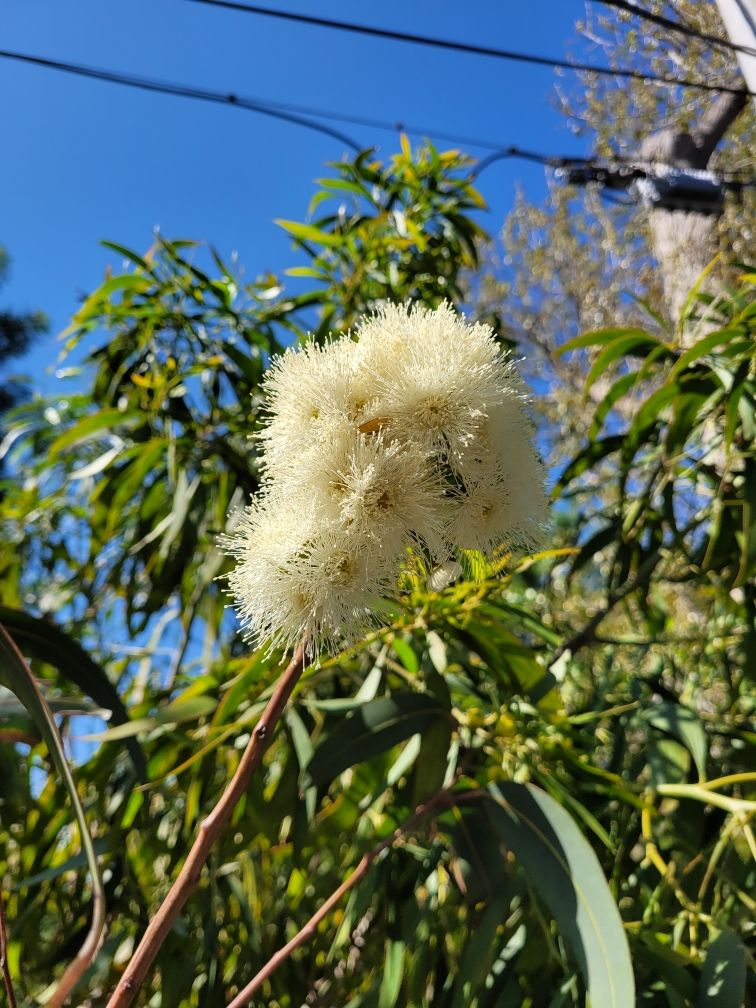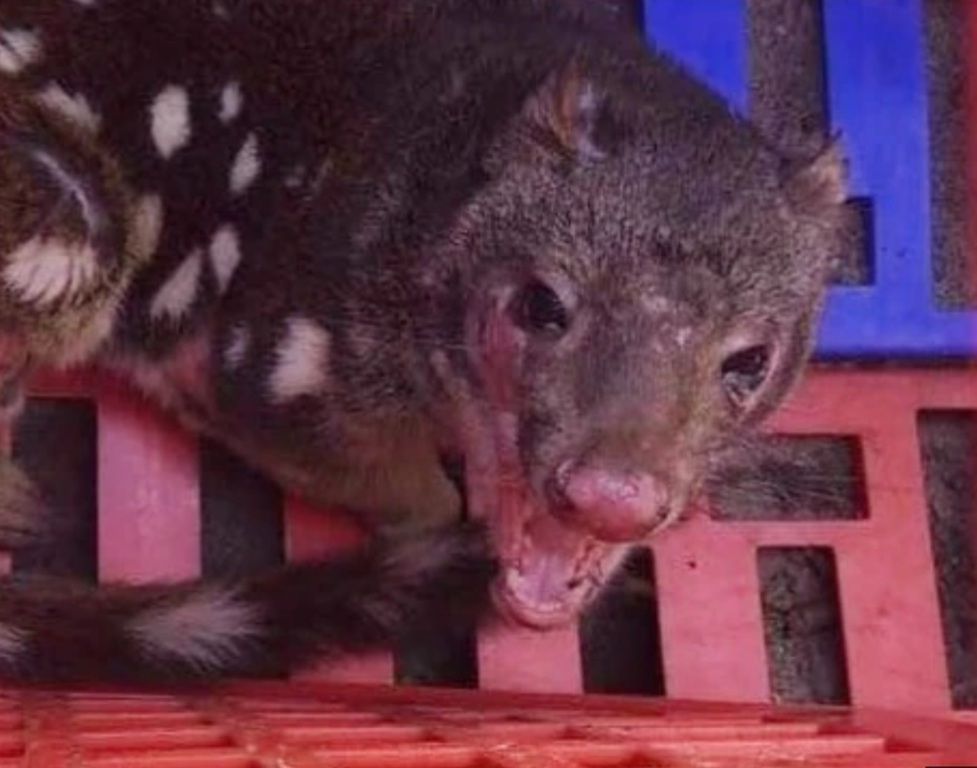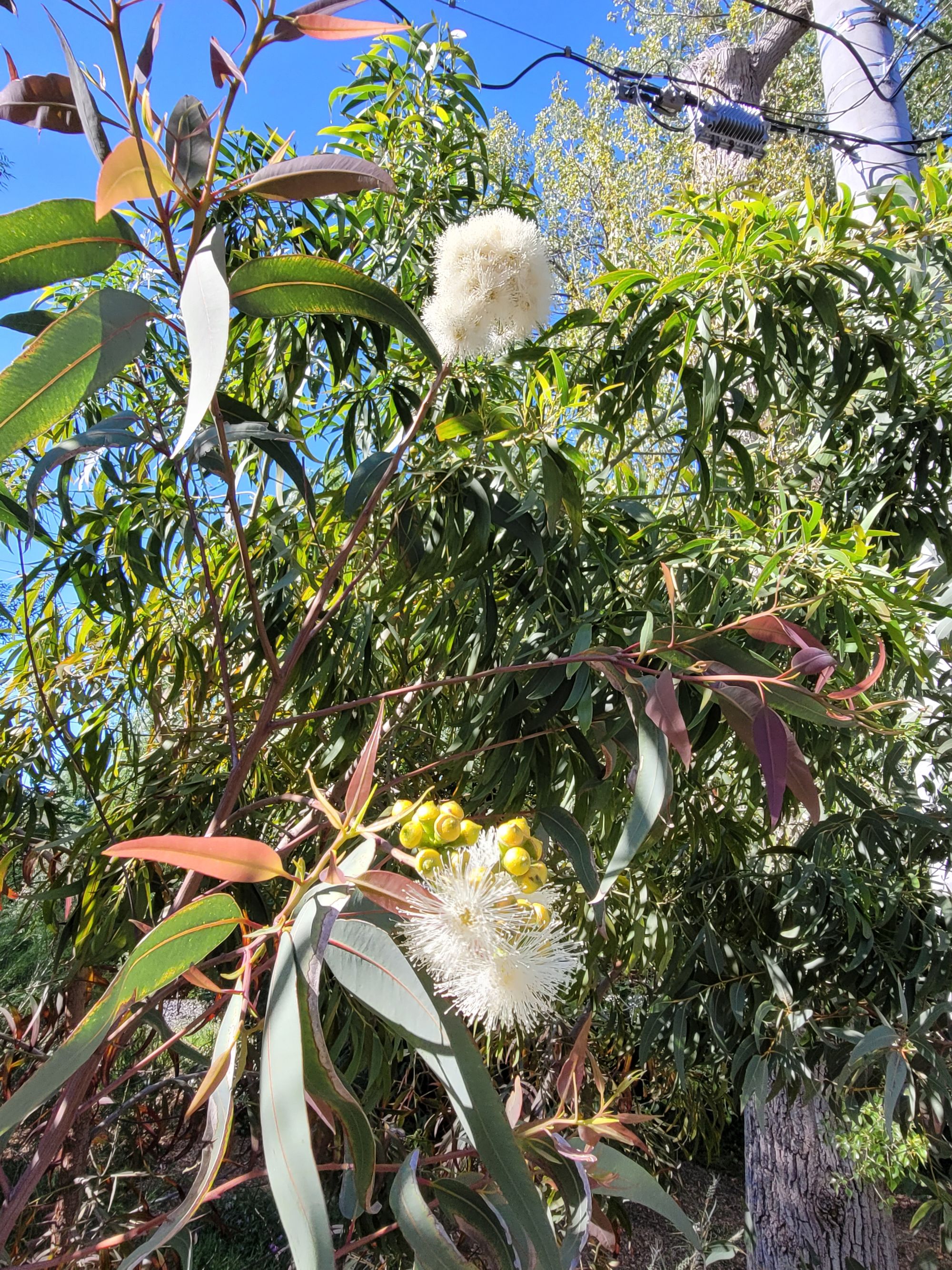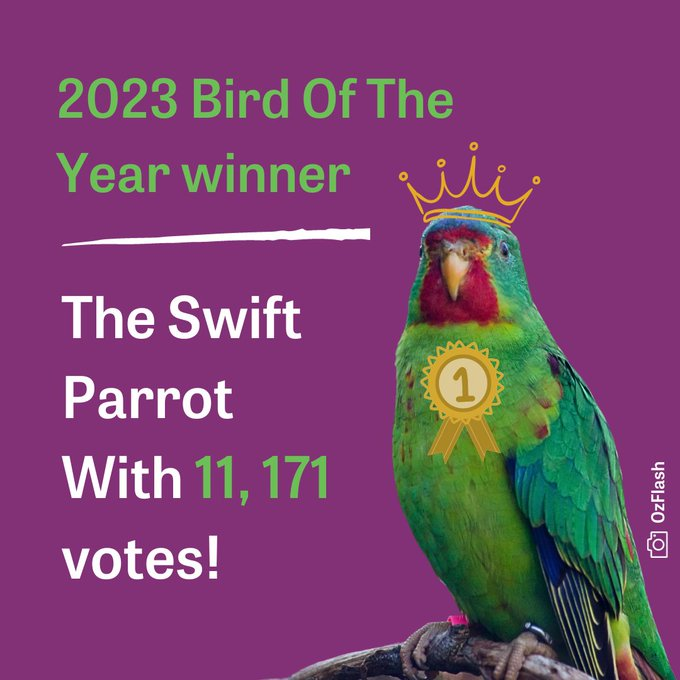Fur, Feathers, Flowers and More #24

Well now let's keep our fingers crossed for the Tasmanian Tiger, which has not been reliably sighted for nearly 90 years.
A Spotted Tailed Quoll has been caught raiding a hen house at Beachport, S.A. - last sighted there 130 years ago, and long thought locally extinct throughout South Australia.

The little beasts have survived in diminishing numbers in eastern Australia and Tasmania.
Corymbia eximia nana Start To Flower
After a long wait we are starting to see the first flowers on a feature tree FofEV has introduced to the Sherwood Road plantings.

Corymbia - commonly referred to as "bloodwoods" - is a genus within the broad eucalyptus group. (The other major groups are eucalyptus and angophora.)
The most identifiable Corymbia is the brilliant red WA Flowering Gum C. ficifolia - many different coloured hybrids are now available (see the nature strip plantings in Wimbledon Grove near Alandale).
Eucalyptus is one of three similar genera that are commonly referred to as "eucalypts", the others being Corymbia and Angophora. Many species, though by no means all, are known as gum trees because they exude copious kino from any break in the bark (e.g., scribbly gum).
The nana part of the name literally means small, so this version of C. eximia is suitable for yard and street plantings.
Guardian Bird of the Year Winner Announced
Mary V has drawn our attention to the Big Reveal - The Guardian Australia/BirdLife Australia's 2023 Bird of the Year poll winner is... The Swift Parrot!
Step aside Taylor –

Minor placegetters are:

I think we have seen the last of the Gang Gangs for 2023, but I note more frequent sightings of excited Rainbow Lorikeets.
Bird of the Week
Rainbow Lorikeet

How fortunate we are to have such brilliantly coloured birds around our suburban streets.
Fruit thieves they may be but bright, active and cheerful too.
- Males and females are all but identical. If you know birds are the same age, the male will be larger, but usually the only way to tell them apart is a DNA test.
- One of the reasons they are so successful in urban areas is that they have a flexible diet - they eat fruit, seeds, insects - and there are even documented cases of them eating meat! BUT - just because they can eat anything, doesn't mean they should. In fact Rainbow Lorikeets actually have tongue that looks like a paint brush. It is designed for feeding on nectar so can be damaged by other tougher foods.
- They are hollow-nesters but are not overly fussy. Rainbow Lorikeets have been seen nesting in palms, in rock crevices and even digging a hole at the base of a tree!
- Rainbow Lorikeets are 'communal roosters'. This means that on dusk, huge numbers of them congregate together in a few trees. This can be extremely noisy! Research has shown that they are more likely to roost in trees where there is a large amount of artificial light at night (around places like shopping centres and sports ovals), most likely because they can see nocturnal predators coming more easily.
Beast of the Week
Quolls

Don’t let their pink noses and thick, soft fur fool you: Australia's 'native cats' aren’t much like cats at all. Quolls are actually tree-climbing, den-dwelling marsupials.
We have four species of quoll in Australia:
- Spotted-tailed Quoll (Dasyurus maculatus)
- Western Quoll (Dasyurus geoffroii)
- Eastern Quoll (Dasyurus viverrinus)
- Northern Quoll (Dasyurus hallucatus).
Growing up to 125cm (including a long tail) and 5kg, the Spotted-tail Quoll (or Tiger Quoll) is now the largest native carnivore left on the mainland (excluding dingoes). The Northern Quoll is the smallest quoll, with males weighing around 1kg (females are appreciably smaller).
Quolls have black to fawn fur, white spots, long tails and sharp teeth. Their genus name, Dasyurus, means ‘hairy-tail’.
Before European settlement at least one species of quoll inhabited most parts of the country.
Flower of the Week
Pale Vanilla Lily
We have several Pale Vanilla Lilies in our bushland wildflower walks - but being modest small plants you need to seek them out.
They are inconspicuous except when in flower.

Member discussion